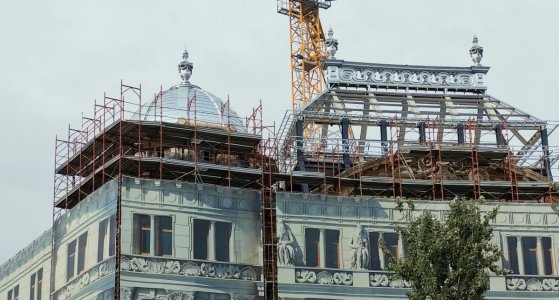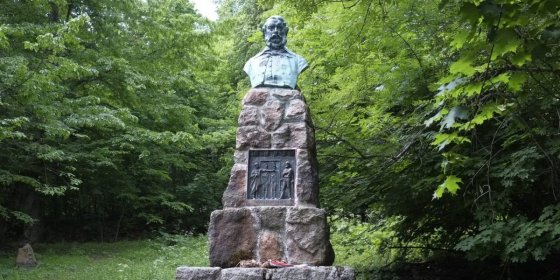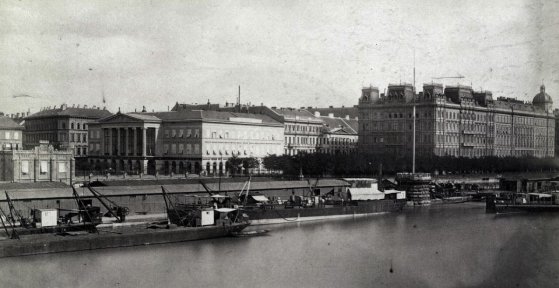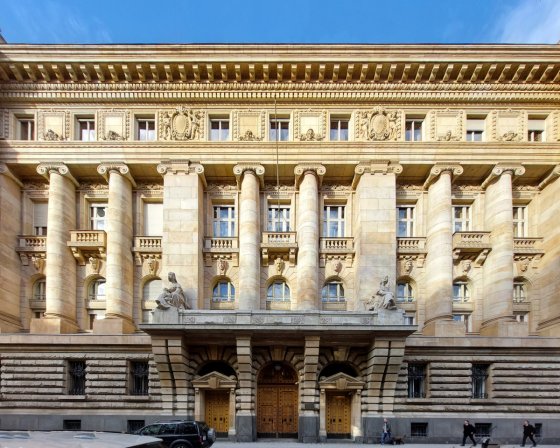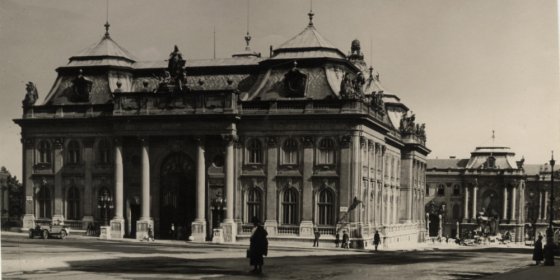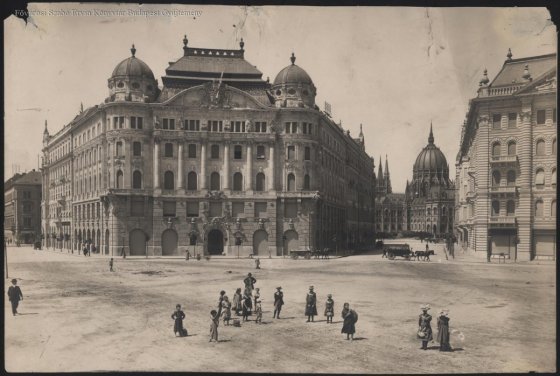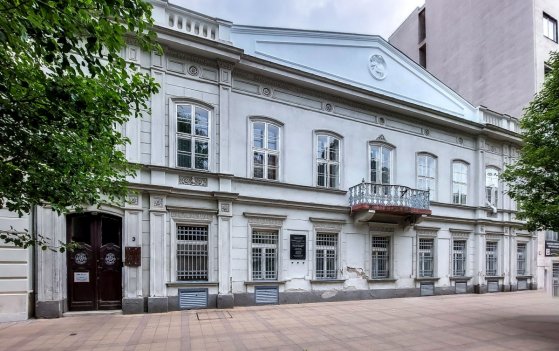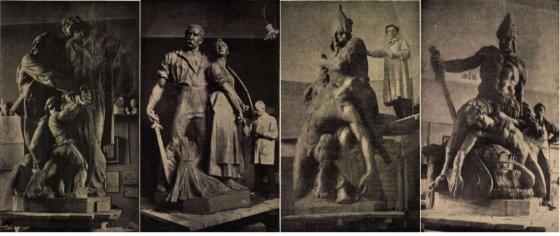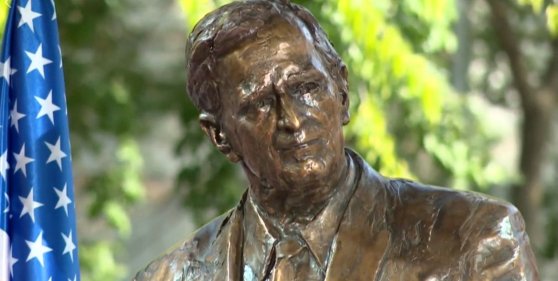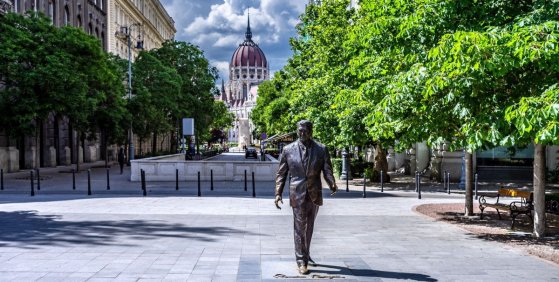 The „intertwined history” of the bridges and the city of Budapest
Which ideas and events have shaped the fate of bridges of Budapest and the cityscape? Alongside many other interesting facts, this question is also answered this newly published book by the Budapest City Archives, which introduces the history of bridges in Budapest.
The „intertwined history” of the bridges and the city of Budapest
Which ideas and events have shaped the fate of bridges of Budapest and the cityscape? Alongside many other interesting facts, this question is also answered this newly published book by the Budapest City Archives, which introduces the history of bridges in Budapest.
Szabadság Square
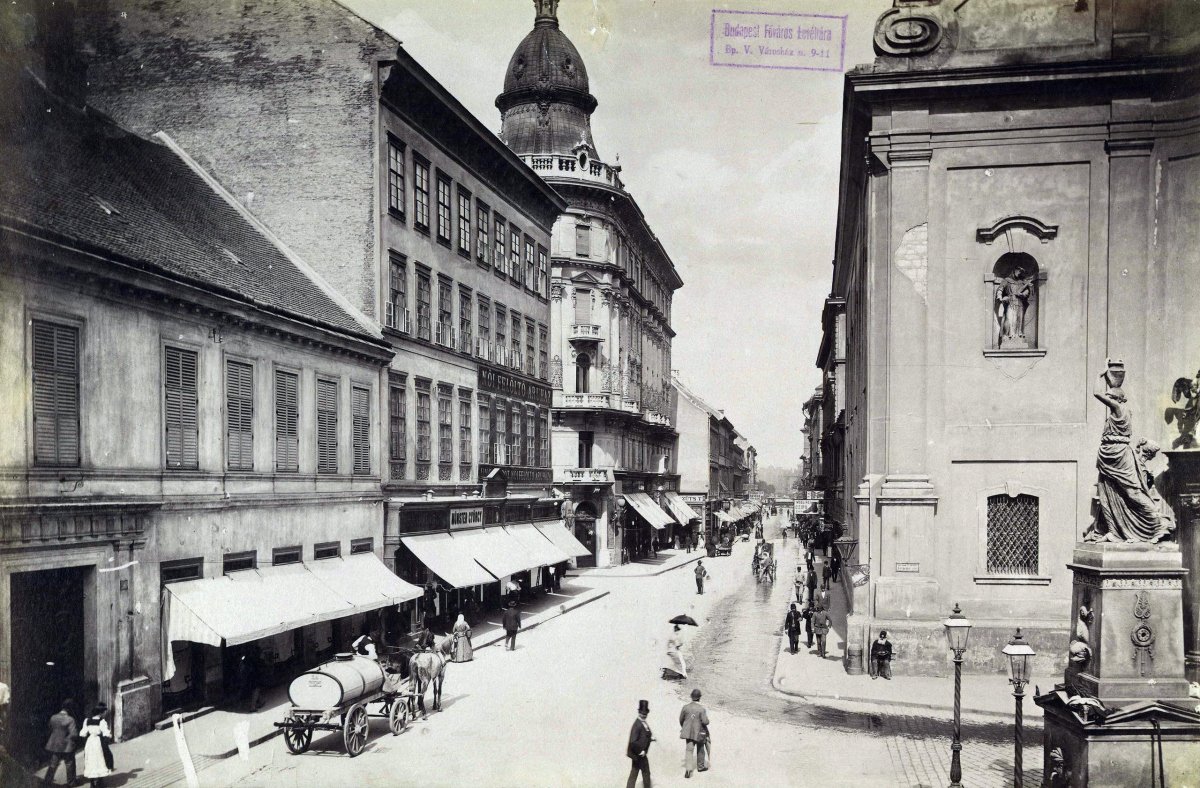 If the efforts of 1848 had not failed, Szabadság Square would be somewhere else today
If the efforts of 1848 had not failed, Szabadság Square would be somewhere else today
March 28, 2023 at 12:30 PM
Do you know where Diadal Street or Szabad Sajtó Street was in 1848? Not where many would think. During the revolution of 1848, the street names of Pest and Buda also changed.
The domes of the Adria Palace are already in place
October 25, 2022 at 2:00 PM
The restored domes of the former headquarters of Adria Royal Hungarian Sea Navigation Company on Szabadság Square can already be seen. The facade and roof ornaments of the palace, designed by Arthur Meinig are being renovated based on archival photos.
Lajos Kossuth's first public statue in Budapest - Special creation in the Zugliget Forest
September 21, 2022 at 11:00 AM
Few people know that at the end of Mátyás Király Road in Zugliget, in the forest, there is a special, 110-year-old statue of Kossuth on a huge pedestal. On the 220th anniversary of the former reformist politician's birth, Pestbuda will show the exact circumstances under which the work of art ended up in the Zugliget Forest, and also examine whether this was really the first public Kossuth Statue in Budapest.
Plans for a metropolis - the beginnings of Budapest's urban planning
July 25, 2022 at 10:00 AM
Budapest's golden age coincided with the country's economic boom: after the Compromise of 1867, the city, located on both banks of the Danube, began to develop rapidly. In 1870, in order to regulate growth, the Parliament established the Budapest Public Works Council, whose first tasks included the procurement of a general city plan. Based on this, in 1872 - one hundred and fifty years ago - Pest's first comprehensive regulatory plan was drawn up.
The wedge of Szabadság Square is renewed - The Hungarian National Bank regains its original splendour
November 8, 2021 at 9:00 AM
The Hungarian National Bank was established in 1924, and the institution's well-known building in Szabadság Square was actually handed over in 1905 as the headquarters of the Austro-Hungarian Bank in Budapest. The economic flourishing of the period of dualism is also reflected in the prestigious building designed by Ignác Alpár, which will hopefully be brought to the fore by the reconstruction that will begin soon. During the renovation of the monument, the original conditions will be restored in the interior and the whole building will be modernised and made energy-efficient.
Budapest then and now – 6 photos showing how much the cityscape has changed over a century
August 31, 2021 at 9:00 AM
The change in Budapest can be surprising when looking at old pictures: the former riding hall behind the National Museum, the New Building (Újépület) on the site of the current Szabadság Square, the disappeared houses of Pest and Buda downtown, the former splendour of the Buda Palace, and the beautiful historic buildings which stood on the site of the series of hotels along the Danube. What has changed and what is constant? Take a look at the six pictures Pestbuda collected.
The Adria Palace in the storm of history
August 15, 2021 at 3:00 PM
The book titled Hazának használj! Az Adria-palota története [Help the Homeland! The History of the Adria Palace] was recently published, which not only presents the history of the nearly 120-year-old building in Szabadság Square, which is currently under renovation, but also provides an insight into the lives of the former owners and celebrities who lived here.
Teleki Blanka opened the first school for girls in Pest in a building on Szabadság Square that still stands today
July 16, 2021 at 9:00 AM
A peculiar twist of fate is that Blanka Teleki opened the first education institution for girls in Pest next to the Újépület ('new building') in Lipótváros, that served as a military barracks, which became her prison in 1851, because according to the imperial authorities the 1848 revolution started from her educational institution. The building, which still stands on the former Promenade, later housed a bank, then the economic police of the Ministry of the Interior, and today the headquarters of the Catholic Camp Bishopric.
Main building of the Central Bank of Hungary under renovation
May 21, 2021 at 5:30 PM
On the centenary of the founding of the central bank in 2024, the headquarters of the institution will be renovated to their original form on Szabadság Square. The building was built in 1905, its external appearance has not changed since then, but its interiors were significantly remodelled after World War II, undermining its historical value. Now its original beauty will return, inside and out.
Irredentist statues erected on Szabadság Square 100 years ago
January 18, 2021 at 11:00 AM
The group of irredentist sculptures erected in response to the Trianon Peace Treaty was unveiled a hundred years ago, on 16 January 1921. One of the first spectacular responses to the treaty that ended World War I was welcomed by a crowd of 50.000. The sculptors. Zsigmond Kisfaludi Strobl, István Szentgyörgyi, János Pásztor and Ferenc Sidló cast the statues to depict everything that the territories lost only half a year earlier had meant in Hungarian history.
Statue of George Bush unveiled on Szabadság Square
October 27, 2020 at 2:30 PM
Statue of George H. W. Bush., 41st President of the United States of America, has been unveiled on Szabadság Square. The bronze full-length work was erected alongside a statue of Ronald Reagan.
Statue of George H. W. Bush to be erected beside statue of Ronald Reagan on Szabadság Square
September 7, 2020 at 10:00 AM
A statue of President George H. W. Bush is to be erected in Budapest on Szabadság [Freedom] Square, alongside an existing statue of President Ronald Reagan. The monument will be inaugurated on the Hungarian National Holiday, 23 October to commemorate the 30-year anniversary of the fall of communism in Central and Eastern Europe.
More articles
 The „intertwined history” of the bridges and the city of Budapest
Which ideas and events have shaped the fate of bridges of Budapest and the cityscape? Alongside many other interesting facts, this question is also answered this newly published book by the Budapest City Archives, which introduces the history of bridges in Budapest.
The „intertwined history” of the bridges and the city of Budapest
Which ideas and events have shaped the fate of bridges of Budapest and the cityscape? Alongside many other interesting facts, this question is also answered this newly published book by the Budapest City Archives, which introduces the history of bridges in Budapest.
 The Bridge Report, which brought a turning point in the history of Budapest
A travel report that changed the history of Pest and Buda, as well as Hungary. The little book contributed to the change of half a thousand years of legal customs and the implementation of an investment of unprecedented size and technical quality. This book was The Bridge Report [Hídjelentés in Hungarian].
The Bridge Report, which brought a turning point in the history of Budapest
A travel report that changed the history of Pest and Buda, as well as Hungary. The little book contributed to the change of half a thousand years of legal customs and the implementation of an investment of unprecedented size and technical quality. This book was The Bridge Report [Hídjelentés in Hungarian].
 Drama on the university wall - The heroic monument was planned 95 years ago
In the constant hustle and bustle of the Egyetem Square in Pest, the students may not even notice the monument that decorates the short section of wall between the church and the central building of ELTE. However, it commemorates their predecessors, the heroes who fought for their country in World War I, and those who heroically helped them. The first design of the dramatically collapsing soldier was born in 1928, ninety-five years ago.
Drama on the university wall - The heroic monument was planned 95 years ago
In the constant hustle and bustle of the Egyetem Square in Pest, the students may not even notice the monument that decorates the short section of wall between the church and the central building of ELTE. However, it commemorates their predecessors, the heroes who fought for their country in World War I, and those who heroically helped them. The first design of the dramatically collapsing soldier was born in 1928, ninety-five years ago.

